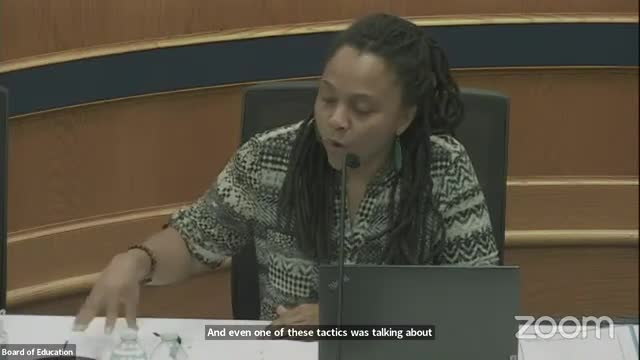Community Organizing Key to Solving School Bus Crisis
November 08, 2024 | Durham Public Schools, School Districts, North Carolina
This article was created by AI summarizing key points discussed. AI makes mistakes, so for full details and context, please refer to the video of the full meeting. Please report any errors so we can fix them. Report an error »

During a recent government meeting, officials discussed pressing issues surrounding school transportation and community engagement in response to a bus driver shortage affecting local schools. The conversation highlighted the need for community organizing to recruit volunteer drivers, particularly from local churches and community groups, to alleviate transportation challenges faced by families.
One board member raised concerns about walk zones, emphasizing that while they could reduce bus usage, they might disproportionately affect families without the means to walk their children to school. The board acknowledged that many families, especially those with young children, may not feel safe or have the time to walk long distances, particularly in adverse weather conditions. This concern was echoed by public comments indicating that a significant portion of the district's ridership consists of elementary school students.
The discussion also touched on various tactics to improve transportation efficiency, including express bus stops for middle and high school students, which could free up resources for younger students. The board expressed support for increasing staff supervision during this crisis and emphasized the importance of clear communication with families regarding transportation schedules.
In addressing the equity of transportation services, officials noted that walk zones are part of many local education agencies' operations, but they must consider safety and accessibility. The board discussed the potential for community partnerships to facilitate walking groups and carpools, aiming to create a supportive environment for families.
The meeting concluded with a call for a formal request to families to evaluate their need for bus services, encouraging those who do not require transportation to opt-out, thereby allowing the district to better allocate resources to those in greater need. The administration was tasked with exploring logistics for this initiative, emphasizing the importance of community involvement in resolving the transportation crisis.
One board member raised concerns about walk zones, emphasizing that while they could reduce bus usage, they might disproportionately affect families without the means to walk their children to school. The board acknowledged that many families, especially those with young children, may not feel safe or have the time to walk long distances, particularly in adverse weather conditions. This concern was echoed by public comments indicating that a significant portion of the district's ridership consists of elementary school students.
The discussion also touched on various tactics to improve transportation efficiency, including express bus stops for middle and high school students, which could free up resources for younger students. The board expressed support for increasing staff supervision during this crisis and emphasized the importance of clear communication with families regarding transportation schedules.
In addressing the equity of transportation services, officials noted that walk zones are part of many local education agencies' operations, but they must consider safety and accessibility. The board discussed the potential for community partnerships to facilitate walking groups and carpools, aiming to create a supportive environment for families.
The meeting concluded with a call for a formal request to families to evaluate their need for bus services, encouraging those who do not require transportation to opt-out, thereby allowing the district to better allocate resources to those in greater need. The administration was tasked with exploring logistics for this initiative, emphasizing the importance of community involvement in resolving the transportation crisis.
View full meeting
This article is based on a recent meeting—watch the full video and explore the complete transcript for deeper insights into the discussion.
View full meeting
